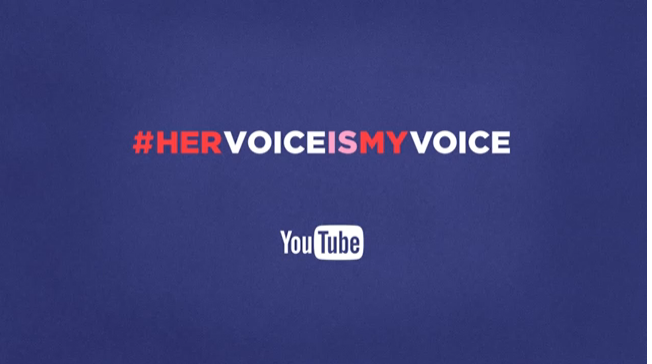When it comes to tackling the gender equality issue in the industry, content marketing strategies need to be more than skin deep. It requires content marketers to proactively tell richer and more diverse stories to help bridge the diversity gap both within the industry and within the content they produce to engage the customers of today and tomorrow.
It’s no secret that women are underrepresented in senior leadership roles and that includes the marketing industry. While some 41% of marketers early in their career are women, only one in four marketing executive positions are filled by a woman. 
Recent research indicates that female marketing directors earn 17% less than their male peers and female marketing and sales directors, overall, are paid almost a fifth less than their counterparts. IPA reported that while men and women are at a pretty level playing field at the start of their careers, C-suite roles in creative agencies are still male dominated.
In honor of International Women’s Day, it’s important to assess the role that content strategists can play in moving the needle on the gender diversity challenge.
Creating compelling, authentic content requires telling stories with different voices, perspectives and experiences. It’s not about creating “diversity marketing,” rather it’s ensuring that all content marketing is inclusive to reflect the diverse audiences the content serves. Too often, brands segment content campaigns to serve specific diversity goals rather than incorporating diverse voices and stories within everything they do.
Last year, the Unilever-owned Dove brand released “The Dove Global Beauty and Confidence Report” which revealed that 71% of women and 67% of girls are calling for the media to do a better job portraying women of diverse physical appearance, age, race, shape and size.
It’s not surprising then that one of the key findings of research conducted by Unilever over the last few years found that a significant 40% of women don’t believe today’s advertising represents them. An analysis of advertisements across a range of countries and brands found that 50% depicted a negative or “not progressive” stereotype of women and just 3% showed clever or funny women.
Marketing, both B2C and B2C, has been gripped by an inertia in changing the way it portrays women. Content across the board is still succumbing to outdated stereotypes that are negatively impacting both business results and society at large.
However, a few brands are starting to actively pursue change. Food brand Knorr, for example, launched its #loveatfirstsight campaign to focus on people’ love for food rather than depicting the stereotypical representation of women in the kitchen cooking a meal for her family.
The Geena Davis Institute on Gender in Media partnered with Ford to combat gender inequality with a video series that tells the inspirational stories of three YouTube creators
In the series, #ShesGotDrive, writer and director Yulin Kuang, indie pop artist Clara C and YouTube star Taryn Southern talk about how they pursued their artistic passions despite early struggles. The videos support the institute’s goals of eliminating bias and challenging stereotypes in media targeted at children.
For Ford, the campaign furthers the brand’s efforts to support diversity and opportunities for women. The auto brand’s goals are promote gender equality and opportunities for girls and young women. Last year, Ford worked with Girl Scouts to sponsor Girls’ Fast Track Races, which allows girls to learn about automotive engineering by building and racing their own toy race cars.
In celebration of this year’s International Women’s Day, YouTube launched the #HerVoiceIsMyVoice campaign which aims to “celebrate the women who inspire us every day.” The campaign encourages YouTube users to share their voices—and videos—of inspirational women they know from around the world. 
Addressing the gender diversity challenge is especially critical as content marketers struggle to create effective content that engages not only Millennials but Generation Z, the cohort born between 1995 and 2010. It will be a strategic goal for most businesses given the impact of this generation which equates to $44 billion in purchasing power.
One notable Generation Z marketing trend that no content brand can afford to ignore is the emerging blurring of traditional gender roles. A 2015 study shows that 82 percent of Gen Zers think that ‘gender doesn’t define a person as much as it used to,’ and 56 percent say they know someone who uses gender-neutral pronouns (like ‘they,’ ‘them’ and ‘ze’).
According to the 2016 report The Everything Guide to Generation Z, 81 percent of Gen Z are passionate about gender equality. Brand are beginning to take notice and adapting their approach accordingly. Fashion leader Zara, for example, launched a genderless line targeting teenager while Coca-Cola launched a ‘Due or Diva’ campaign encouraging teens to share both the masculine and feminine sides of their personalities by choosing specially designed cans. Even the Barbie brand has gone gender-neutral with the introduction of a young boy in its advertising campaign.
In order to engage the Gen Z audience, brand marketers will need to think differently and sketch out a brand muse to ensure that the company’s values map to consumers aspirations which are not limited to gender. Gender-neutral marketing allows brands to resonate around the consumers’ entire lifestyle and not just their gender.
Tips for tackling gender diversity in content
Content strategists and marketers have an important role to play in communicating the brand’s commitment to create content that resonates and is reflective of all the audiences it serves. Here are some action steps to consider:
- Creative briefs. Make sure creative briefs address key questions relating to gender and diversity. Is the primary insight truly dependent on gender? What role will the primary character play? What is the appropriate appearance for the female character? How should her personality be represented?
- Expanded use of imagery. Perform an image search using any stock image service and you’ll find a vast array of imagery depicting women in stereotypical, one-dimensional ways. While men are depicted as strong leaders, images with women are most often focused in sexual or supporting roles. Select images which complement your storytelling approach that is focused on communicating diverse female voices, perspectives and experiences.
- Language choice. Content marketers need to be especially cognizant that language choice does not reflect a gender bias, whether or unconscious or not. Word choice matters.
- Diversity in thought leaders. Because men hold the majority of senior-level roles in organizations, it is easy to fall into a rut of only seeking them out as resources for content development. Journalists and writers should make a concerted effort to incorporate as much diversity as possible when seeking out the perspectives of thought leaders.
Accelerating women’s path to power
As content strategists, we understand that content is not just a nice-to-have but rather a strong driver of business success. As a result, content marketers should have not just a seat at the table but a leadership role in shaping strategic business growth. It is in that role that content leaders can proactively lead change to help resolve the diversity challenge in the marketing industry. Here are some action steps to start tackling the gender equality issue:
- Close the confidence gap. Research supports the evidence of a confidence gap among women in which women feel they are equally capable of their co-workers while men feel they are superior to their co-workers. An oft-cited finding from a Hewlett-Packard report reveals that while men apply for a job when they meet only 60% of the qualifications, women feel they must meet 100% of the qualifications before they apply for the role. It’s important to encourage women at all stages of their career to understand the unique strengths they bring to the table and pursue opportunities in the workplace.
- Invest in sponsorship programs, not just mentoring. A sponsor not only mentors junior colleagues but champions their prospects and skills, protecting them enough to take risks and make mistakes. Take the role of sponsor seriously and help advance the visibility of female colleagues within your organization.
- Champion leadership opportunities. The only way for women to close the confidence gap is to gain the experience and exposure to leadership within an organization. Look for opportunities to provide female team members the ability to learn leadership skills such as by leading a meeting and providing feedback to executive leaders.
- Gain visibility at industry events. Too often industry conferences feature the same rotating network of male keynote and session speakers. Submit a proposal for a conference session to your favorite event and support other female industry speakers.
- Share opportunities with your network. Men have traditionally done a great job of networking with each other to share news about opportunities, offer referrals or to provide support. Women, who often must juggle conflicting personal and professional priorities, have not been as proactive in their networking efforts. Attend professional networking events for women, be generous with your advice, share leads about new job opportunities with your female network and help build up women in their professional career journey whenever possible.
The gender awareness and diversity challenge will not be resolved overnight. It is not “women’s business” but the responsibility of both men and women to address. Content marketers can do their part to ensure progress is being made by creating compelling stories that reflect diverse voices, perspectives and experiences and by supporting women throughout their career journey.
You’d think with content marketing now fully recognized as a valuable function within the enterprise that the reams of content being churned out would be anything but average. But despite growing interest and the number of content channels available, the state of the content marketing function is stalled.
Lacking in any formal vision or strategy, many content marketing initiatives are lackluster, resulting in average content and results.
On Day 1 of the Content Marketing World Conference in Cleveland, Robert Rose (@Robert_Rose), Chief Strategy Advisor with Content Marketing Institute and author of “Experiences: The 7th Era of Marketing,” led a workshop on “Content Creation Management for the Enterprise” in which he suggested that content marketing today is stuck in “average” gear.
He noted that recent CMI research revealed some interesting insights about the state of the content marketing function. Specifically, only 36% of those enterprises surveyed have a formal content marketing strategy while 71% admit to just beginning to take first steps into formulating a strategy. In addition, more than half (57%) are unsure of how success in content marketing should be defined.
How can you ensure that your content marketing program doesn’t stay stuck? Here are a few insights to help you get beyond average:
- Recognize that owned media requires a different investment model than paid, earned or shared media.
“Brands think owned media isn’t working media,” Rose explained. “We have to make it working media by building and maintaining an audience over time.” - Create owned media assets that effectively subscribe an audience, win customers or engage evangelists.
What is the goal and focus for each content initiative? Engage an audience and inspire conversation? Nurture leads and enhance value? Or grow an audience and expand their experiences? - Build a business case by defining the purpose and goals of content marketing.
Rather than jump into a content marketing program by focusing on what you should start doing, instead identify what you need to stop doing. - Think strategically.
What is the content mission and creative vision? What are the primary goals of the business and areas of differentiation? How will the operating model be sustained? - Spend the majority of your time and effort on creating strategic content experiences.
In too many enterprises, content marketers spend the bulk of their time on ad hoc tasks or supporting campaigns, leaving very little time to create those content experiences that will demonstrate real value to audiences and customers. - Create a big idea around which to build a content strategy.
What is the big content idea that will result in reaching and engaging audiences? Develop the big idea strategically as well as smaller content assets to support it. - Develop a content strategy that demonstrates real value to audiences and customers.
Get to know your audience so well that you can become their “trusted advisor”, providing relevant experiences to their needs and desires. Through the development of detailed content personas, define the “personal unique value proposition” of targeted audiences and seek to fill that need through content that may or may not be tied to the business’ products and services. - Craft engaging content assets around those “jobs to be done” of targeted audiences. Determine who your audience is outside of your service or product. Ask open-ended questions and observe their behavior. How do they discover new solutions to meet their needs and wants (those jobs to be done)? What is missing from their current solutions? Where is it on their priority list? “Solving the `Jobs to be Done’ question is our advantage,” Rose noted. “Intent is our advantage as content marketers over media companies.”
- Tell meaningful stories, not forgettable tales to engage audiences.
“A story is simply an argument that is well crafted, entertaining, engaging and thoroughly convincing,” Rose suggested. “An argument’s goal is to tell the truth, not to relay facts.” In order to tell meaningful stories, businesses need to identify what excites them about solving the audience’s problem, what they believe about it and what is at the heart of their brand. - Measure the effectiveness of content, not teams.
Focus on measuring progress to achievement of identified primary goals followed by secondary goals and key performance indicators. Recognize that progress and improvements in process must be measured across time as audiences are built and maintained.
Average just doesn’t cut it in today’s content marketing environment. To get beyond average, content marketers need to be committed to making progress against strategic business goals and creating engaging content experiences that not only entertain but also demonstrate true value for targeted audiences and customers.
As Henry Ford noted, “Coming together is a beginning; keeping together is progress; working together is success.”
Relationships are tough. Just ask any couple and they’ll tell you maintaining long-term, mutually fulfilling relationships takes work. The same is true of the relationships content marketers build with their customers and prospects. Too often, content strategies get stale and predictable resulting in a failed relationship. With so much competition for attention and content, today’s content creators and strategists must figure out ways to keep the romance alive. If you’re looking to spice up your content marketing relationships, consider these ideas.
Just minutes before the coin toss that would kick off Super Bowl 50, “Broadway Joe” Namath, former American football quarterback, American Football League icon and Hall of Famer, shared some interesting thoughts about storytelling. “If you go across America,” Namath suggested in the pre-game video, “what you’ll learn is that stories mean a lot to people…the lessons they teach, the characters they turn into legends. Well I’ve got a story for you. Let me tell you why I think it’s so great. It’s because you couldn’t have written what’s happened in this game over the past 50 years. I just don’t think anyone would believe it.” Namath went on to describe how the Super Bowl got its name and what that first championship game was like. But it was his words about storytelling that were meant to foretell a great experience for content marketers and consumers alike.
If any event had the makings of an emotional experience and primed for great storytelling it was Super Bowl 50. This game would mark the half century anniversary of the event itself. Legends from 50 years of the sport would be recognized in a formal ceremony. On the field two great quarterbacks would be pitted against each another—Peyton Manning, the sentimental favorite looking to capture one last Super Bowl ring before the likely announcement he would retire and Cam Newton, a young, brash QB who helped lead the Carolina Panthers to a place in the big game. Surely all this emotion would also be captured in this year’s offerings of Super Bowl commercials? Certainly this would be the year advertisers and content marketers would take to heart all the research and data and trend information available that clearly indicates content must focus around emotion and empathy for its target audience in order to achieve brand goals? Undoubtedly, Super Bowl 50 would be the year advertisers would marry emotional messages with memorable visuals?
Bwahahaha!…..Go ahead. If you dare, look over your shoulder. You will likely find the content apocalypse is fast catching up to you. It will require agility, creativity and careful planning to avoid joining the hordes of content zombies littering today’s content landscape. To take a bite out of this impending apocalypse you’ll need to focus on a content strategy that is mouthwateringly contagious.
Like zombies, too many brands and content creators are mindlessly marching their way through today’s multi-channel content landscape hypnotically shoveling out tweets, posts, videos, infographics and more. These content zombies are ill-prepared to face the apocalypse that’s exploding all around them. 
Let’s face it. As we cope with an onslaught of new channels, devices, screen sizes and platforms, we’re simply outmatched. Yet, surviving this content zombie apocalypse is possible. It will require the ability for content creators, designers and developers alike to adapt and adopt a new mental model.
As American author Max Brooks once said, “That’s the thing about zombies. They don’t adapt and they don’t think. Literally, you could have a zombie on one side of a chain link fence and you could be on the other side and they could be trying to get to you and six feet down could be an open door and they will not go through that door in the fence. That’s why they’re so scary.”
If you’re feeling like a content zombie these days, it’s time to wake up and look alive. Here are 8 steps to get you started.
- Define an Organizational Structure that Works for Content
Does your current organizational structure facilitate content collaboration with a focus on the customer? If not, change it! Content can no longer be segregated into one company silo. It takes a village to build and maintain a strong content strategy. Doing so will likely require changes in your organization’s culture. It’s hard work but critical to the success of any content strategy.
- Dig into the Data
With reams of data about customers and consumers at our disposal, there’s simply no excuse not to dig into the data. Be smart about defining those metrics that will provide the most useful insights in developing and distributing content. Then, make sure those analytic reports don’t just sit on a shelf collecting dust. Use the insights to develop personalized and customized content.
- Get Real about Real-Time Content
Create a structure that will allow you to take advantage of real-time content opportunities. Be fearless about crafting creative content based on what’s happening around you. Get curious and behave like any news hound; seek out engaging stories that will resonate with your audiences. Be smart about which stories are right for your brand and which are not. Don’t forget to cover the stories behind the story for added differentiation for your brand.Think in Terms of Context and Channels
We’re living in a multi-channel and multi-device world. That means content creation must take into account how end users are consuming content on specific devices and within specific platforms. From a website standpoint, this means making decisions about development strategies. Should you develop a separate mobile site? Develop a single site using responsive design allowing content to be consumed in any device? Or, do you adapt content experiences based on the device and platform it’s served up on? Consider that 90% of people start a task on one device and then complete it on another, according to Google and Multi-Screen World. Pew Internet research found that 31% of mobile internet users identify mobile as the primary way they navigate online. Defining how content should be structured and its associated publishing process is critical to any content strategy.
- Master the Art of Creating Customized Content Experiences
Whether it’s social media or video, infographics or complete campaigns, content needs to become more personal and customized in order to engage today’s audiences. Drill down into data to craft content that will map to end user’s interests and preferences. Map content to specific content personas and pay close attention to what your audiences care about. Then, make sure the content itself is communicated in a creative, innovative way. The best way to keep ‘em coming back for more (and telling all their fans and friends in the process) is to create content experiences that resonate with consumers on a personal level.
- Get Ready to Adopt a New Mental Model
Accept the hard truth that content creators must give up control over the presentation and layout of the Web. That control is long gone and won’t be coming back. Instead, content professionals must think in terms of creating clean, format-free content in chunks, rather than styling and presenting rich content, as was done in the days of print. This requires adopting a new way of talking about the workflow and process behind content creation. Content strategists will need to continue to look at ways of managing all content objects to support all content platforms and creating content packages that supports the new workflow process.
- Separate Content from its Form
The notion of the container of a page simply doesn’t exist anymore. That’s a huge shift in thinking for both writers and designers. Content management tools and interfaces must adapt to varying channels and contexts if we’re to be ready for the content strategy of the future. Italics, for example, may matter in audio but not in digital. Creators will need to remove traditional styling out of content in order for it to render appropriately in an audio interface. As information technology pioneer Ted Nelson once noted, “Imitating paper on a computer screen is like tearing the wings off a 747 and using it as a bus on the highway.”
- Plan for Tomorrow
Just keeping up with today’s changes isn’t enough. Content creators need to plan for tomorrow and all the new ways content will be consumed in the future. For example, the time when a single page can be sent simultaneously to a smartphone and smart TV may not be far off. In-car speech-based audio interfaces may also be right around the corner as will Internet refrigerators where our biggest problem will be taking the 30 seconds to pause from Twitter in order to grab our favorite snack from the fridge. Let’s not forget the emergence of toaster printers. How can you adapt your content to all of these new formats? Solving for these future-friendly formats today can help set you up for success tomorrow.
It will be the job of content professionals to facilitate and champion the many changes occurring in the industry. Don’t join the ranks of the content undead. Stay alert, be agile and structure your resources to get ahead of the apocalypse.
Share This
Recent Blog Posts
- International Women’s Day: Taking action to gain traction
- Be a shoulder and a hand: 10 ways to help women in the workplace show up and shine up
- Unfinished Business: Content Marketing’s Role in Cracking the Glass Ceiling
- Lessons Learned from 84 Lumber’s Super Bowl Fail
- Brands Rise Up to Stand Out in Super Bowl 2017
Categories
Blog Post Tags
My Tweets

About Me
Portfolio Categories
Follow Me
Recent Posts
-
International Women’s Day: Taking action to gain traction
The first time I noticed men and women were treated...
-
Be a shoulder and a hand: 10 ways to help women in the workplace show up and shine up
International Women’s Day is an important day of...
-
Unfinished Business: Content Marketing’s Role in Cracking the Glass Ceiling
When it comes to tackling the gender equality issue...
-
Lessons Learned from 84 Lumber’s Super Bowl Fail
84 Lumber got it wrong on Super Bowl Sunday. In fact,...




















